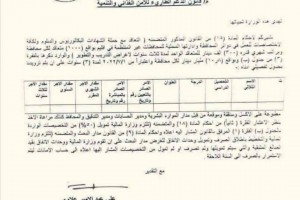
The College of Education for Pure Sciences, Department of Physics, organized a scientific lecture on "Studying the Effect of the Donor-Substitute Mixing Ratio on the Performance of the Active Layer in Organic Solar Cells." The lecture, presented by graduate student Noor Al-Huda Hussein Ali, included the preparation of various ratios of P3HT:ICxA thin films of type BHJ to determine the effect of the fullerene ratio on the optical and electrical properties of the active layer. Six donor ratios were prepared: 1:0.5, 1:0.8, 1:1, 1:1.2, 1:1.5, and 1:2. Atomic microwave fluorescence (AFM) images were taken to examine the surface characteristics, revealing that the average roughness ranged between 2 and 4 nm for all samples. Optical measurements confirmed that the 1:1.2 mixing ratio yielded the highest optical response compared to the other samples. In all samples, the absorption coefficient (α > 10⁴ cm⁻¹) indicated direct electron transport in the active layer. Electrical measurements of the samples showed that S4 (1:1.2) was the best-performing sample, exhibiting increases of 2, 3, 1.8, 3.8, and 2.9 times compared to S1, S2, S3, S5, and S6, respectively, under illumination conditions. Electrical measurements, as a function of sample temperature, were conducted in the range of 25–65 °C under both illumination and darkness conditions. The active photovoltaic layer, P3HT:ICxA, generated relatively similar current values in both the heating and cooling cycles, indicating that the active layer's surface properties were optimized and maintained throughout the heating process. Therefore, this study suggests that the active layer with a mixing ratio of S4 (1:1.2) represents the optimal model for solar cell fabrication
 .
.







